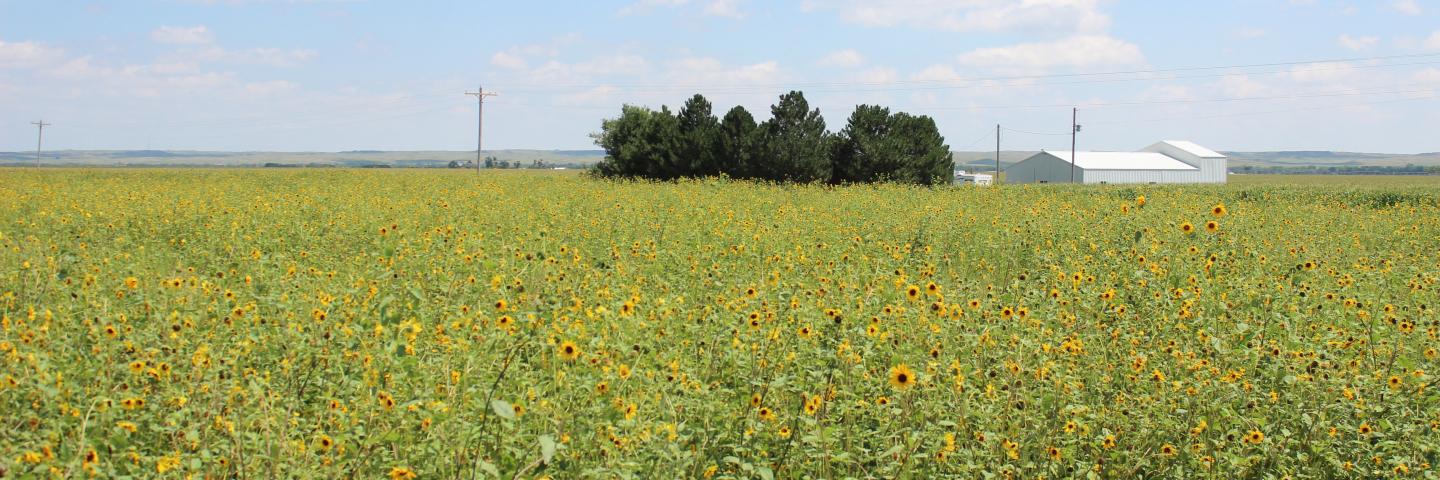Colorado NRCS Announces NEW 2025 IRA-ACEP Application Batching Dates

Colorado NRCS Announces NEW 2025 IRA-ACEP Application Batching Dates
Inflation Reduction Act - Agricultural Conservation Easement Program (IRA-ACEP)
Colorado Natural Resources Conservation Service (NRCS) State Conservationist, Clint Evans, announced the 2025 application cut-off dates for eligible entities and landowners to participate in the Inflation Reduction Act - Agricultural Conservation Easement Program (ACEP-IRA) for both the Agricultural Land Easements (ALE) and Wetland Reserve Easements (WRE) in Colorado. There are two application batching dates offered for complete and eligible applications to compete for available funding. The two application batching dates are, Friday, October 4, 2024 and December 20, 2024 by 4:00 PM Mountain Standard Time (MST).
The Inflation Reduction Act (IRA), Pub. L. No. 117-169, passed by the 117th United States Congress, authorized the use of ACEP funds for easements or interests in land most likely to reduce, capture, avoid, or sequester carbon dioxide, methane, or nitrous oxide emissions on program-eligible land. For FY 2025, the following program-eligible areas are prioritized:
FY 2025 IRA ACEP-ALE Priority Areas
- Program-eligible agricultural lands currently classified as grassland or native vegetation (e.g., sagebrush, tall grass prairie) where NRCS has identified a high threat of conversion to a non- grassland use.
- Program-eligible cropland or grassland where NRCS has identified a high threat of conversion to a nonagricultural use.
Applicants (eligible entities) must be a federally recognized Indian Tribe, state or local units of government, or a non-governmental organization. Applicants must have an established farmland protection program that purchases agricultural conservation easements for the purpose of protecting agriculture use and related conservation values by limiting conversion to nonagricultural uses of the land.
USDA provides up to 50 percent of the appraised fair market value of the conservation easement in this voluntary program and up to 75 percent for qualifying Grasslands of Special Significance (GSS), including projects in Sage Grouse territory. The qualified landowner retains ownership and continues to use the land for agricultural purposes.
To be eligible to receive ALE funding, eligible entity applicants must demonstrate a commitment to long-term conservation of agricultural lands; a capability to acquire, manage, and enforce easements; adequate staff capacity for monitoring and easement stewardship; and the availability of funds. All landowners of record and the land being offered for enrollment must also meet specific eligibility criteria as outlined in the application materials posted to the State ACEP website
FY 2025 ACEP-WRE Priority Areas
- Highly organic soils that will optimize the soil carbon sequestration potential and prevent increased greenhouse gas emissions through the maintenance of existing non-cultivated areas, restoration of previously cultivated areas to perennial vegetative cover, and restoration of the natural hydrology to keep the soils saturated and anaerobic.
- Prior converted or degraded wetlands that will be restored to native (adapted or alternative) forests (e.g., bottomland hardwood forests)
- Program-eligible, existing forest habitat that will be maintained as forest habitat through an NRCS-approved forest management plan.
- Approved localized priorities.
- Montane wet meadows
- Ephemeral wetlands
ACEP-WRE provides financial and technical assistance to help conserve wetlands and their related benefits. ACEP-WRE easements provide habitat for fish and wildlife, including threatened and endangered species. Additionally, they can have a wide range of other benefits, including filtering sediments and chemicals to improve water quality, reducing impacts of flooding, recharging groundwater, protecting biological diversity, and providing opportunities for educational, scientific and limited recreational activities.
ACEP-WRE enrollment options include permanent easements, 30-year easements, term easements and 30-year contracts, depending on the type of landowner and their goals. NRCS pays a specific percentage of the fair market value of the easement and restoration costs for each easement option. Upon selection of an application for funding, NRCS will make an offer for the easement. Landowners should carefully review a copy of the Warranty Easement Deed or other contractual documents associated with the selected enrollment type and be aware and accepting of the retained rights and restrictions that will be placed on the land.
To be eligible for funding selection, all landowners of record and the land being offered for enrollment must meet all applicable eligibility criteria through a planning and evaluation process specific to ACEP-WRE. Landowners should be prepared to work closely with Farm Service Agency and NRCS during this process to fully evaluate the application for eligibility. In general, land eligible for ACEP-WRE includes farmed or converted wetlands, riparian areas, and other wetland types that can be successfully and cost-effectively restored. NRCS will prioritize applications based the easement’s potential for protecting and enhancing habitat for migratory birds and other wildlife.
Application materials can be found on Colorado’s ACEP website.
Fully completed application packets must be received by no later than 4:00 PM MST on an advertised signup date to be considered. Application packets may be sent to the attention of Easements Program Manager, by email (preferred) to laura.trimboli@usda.gov; by FedEx or UPS to USDA-NRCS, Denver Federal Center, Building 56, Room 2604, Denver, CO 80225; or by USPS to USDA-NRCS, Denver Federal Center, PO Box 25426, Denver, CO 80225.
Applications postmarked or time stamped after these deadlines WILL NOT be accepted. Only fully completed and properly executed applications that are submitted by these signup dates on the appropriate forms and accompanied by all required supporting documentation will be considered for funding in FY 2025 for IRA-ACEP. All qualified applications will be reviewed, ranked, and considered for funding according to the Final ACEP rule, policy, and guidance. Complete applications received after the cutoff date may be considered if another sign-up date is announced. Incomplete applications WILL NOT be considered.
For more information, please contact Laura Trimboli at (970) 403-6379 or laura.trimboli@usda.gov or Cody Robertson at (970)880-4938 or cody.robertson@usda.gov. You can also visit your local NRCS at your nearest USDA Service Center or visit the Colorado NRCS ACEP website.
-end-

